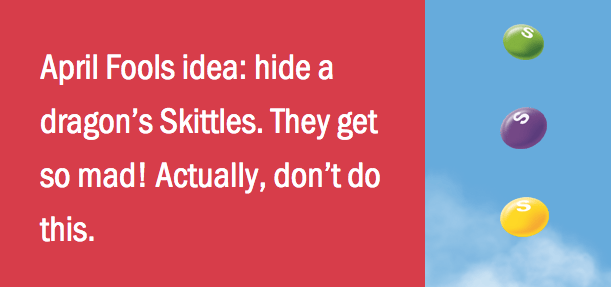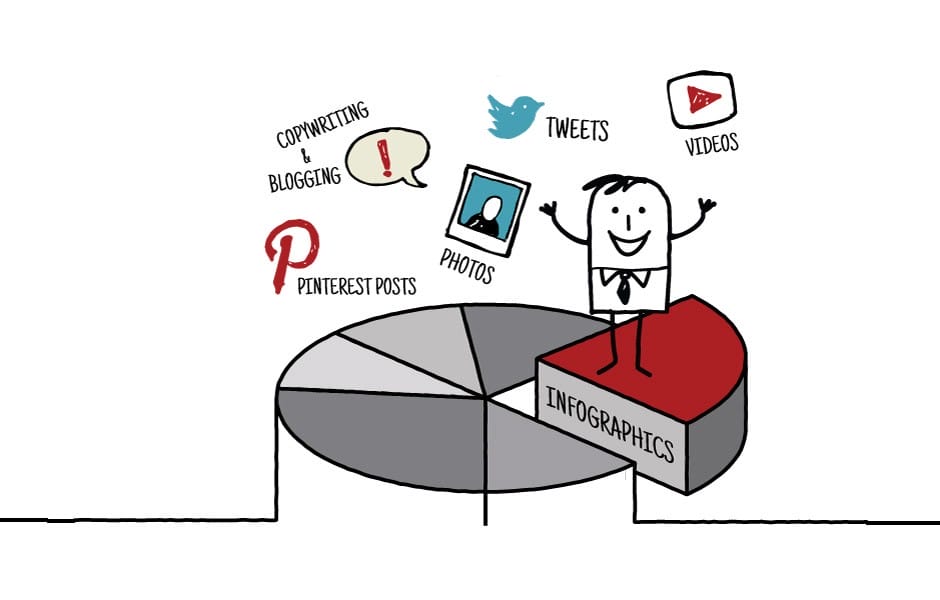The path to a balanced social media strategy may not a straight road. Since its inception, social media was an organic channel with users holding the microphone.
“Listen to your customers. Customers define the brand.” Is the echo of advice to brands from well-intentioned social media consultants. The problem with this is that it implies there is not much value in the brand message.
Early adopters successfully took this approach, which put their efforts in the spotlight of awe inspired traditional marketers. The most notable example I can remember is when Skittles completely redesigned their brand website into a widget pointing to user-generated content from every button in the navigation menu. The usual “about” page framed a Wikipedia page, while another pulled in a Twitter feed.
Today, Skittles.com continues to take an unconventional approach for a brand website. It offers little to no product information using Tumblr as a platform. They have, however, struck a middle ground of using a mix of both brand created and user-generated content. If you want nutritional facts you’ll have to head to their corporate parent site.
Tumblr and the fun nonsense they tend to post is indicative of the young demographic they want to reach. One thing is for sure, they know their audience.

Creating a balanced social media program does not have to be at the expense of the brand or the customer. Both user-generated content and brand content are important. By making an effort to create quality brand owned content you provide two sources of interaction with customers:
- An official source of information
- And, culture.
Brands Are an Official Source of Information
The benefit of customers talking about a brand is word-of-mouth. The drawback is that is can create a lot of misinformation. The brand, assuming it’s honest and trustworthy, is the most official source of information. Without a voice in the conversation, speculation can turn to a firestorm where facts are blurred by emotions. That is never a good scenario.
Brands who continually educate audiences in an open way tend to build stronger relationships with customers online.
It can be a proactive effort, too. Brands and their rock star employees have successfully positioned themselves as thought leaders on industry topics. It doesn’t necessarily have to be about your products. There is a community around your industry and even more around your customers’ various interests. How are YOU going to join the conversation?
Brand Owned Content is an Expression of Culture
Social media is the place to show your brand voice. While customers are no doubt an important part of the culture, the brand itself flames the fires. Using a hub and spoke model leading edge companies are using social media strategies that create a 360-degree brand experience.
For example, follow-up an advertising campaign with online content that entertains and engages audiences on the website, through a mobile experience, and in social networks.
Social media and online publishing are an expression of brand voice. Matching the tone that is spoken by customer service and the language used across marketing you can create a familiar place where customers can engage in conversations.
Customers do not experience a brand in one place. They connect on multiple touch points at different times. Great brands connect the dots by developing their own content across channels with tie-ins to social media to create pockets of engagement.
Smarter Use of User Generated Content
Social media posts created by others about a brand are considered user-generated content (UGC). As mentioned in my opening, “back in the days” it was a matter of turning the fire hose on or off. Today it’s all about curation. There is so much discussion out there that it can be a lot to sort through. Turning on the fire hose can create a few issues in the user experience (e.g. a Twitter widget pulling in all posts mentioning the brand displayed on a brand website):
- Unfiltered language, foul language, offensive posts etc.
- Out of context and confusing conversation snippets.
- Lack of unity in conversation.
- A few WTF moments.
Smart brands are taking a more intentional approach to UGC by encouraging and curating on-topic posts from customers. Curated UGC can be displayed in feeds or widgets on your website that are showcased in creative ways. It can also provide a source of social media content for the brand when you repost and feature customer in your own feeds.
UGC can be leveraged in contests to generate word-of-mouth and collect re-usable content. “Tweet”, “invite a friend” and “share your photo” beat a traditional sweepstakes entry form, which in my opinion holds little value as a customer interaction in the first place.
Here’s an example of how we use UGC for client Sport Chalet. Customers across six interest-based communities are encouraged to tag photos with a special hashtag. Each week their photos are featured in the community by displaying the “best of” in an Instagram and Pinterest widget on the community website pages. The hashtag works as a unique identifier we are able to track and monitor.
Creating a Balanced Social Media Content Strategy
A well-balanced social media content strategy incorporates brand owned content and user-generated content. You need brand content to bring the company culture to life and as a source of official information. UGC provides a voice for the customer that can be highlighted by the brand while heightening engagement. A mix of both types in a content strategy creates credibility. It leverages all of the useful information that both the brand and customer have to offer.


No Comments